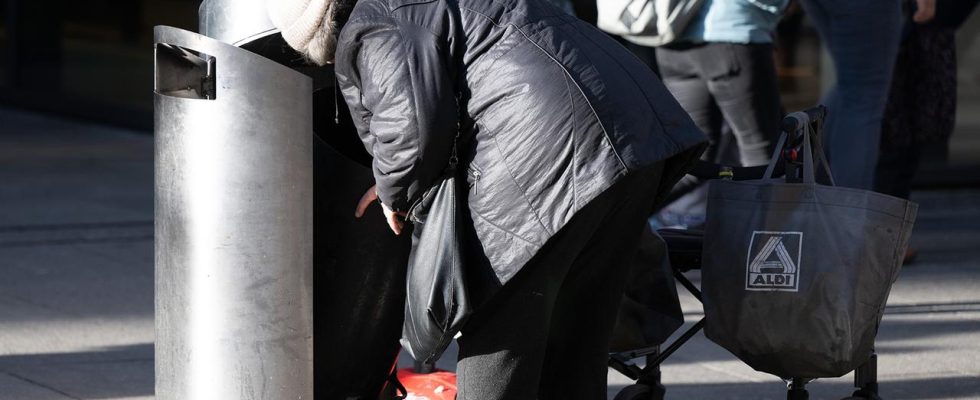Going out to eat, booking a vacation, buying new furniture: many Germans can’t afford that. According to the Federal Statistical Office, around a fifth of the population was at risk of poverty and social exclusion in 2023.
The number of people who are at risk of poverty or social exclusion in Germany remains high. As the Federal Statistical Office based on initial results Survey on income and living conditions (EU-SILC) announced that around 17.7 million people were affected in 2023 – that’s 21.2 percent of the population. Compared to the previous year, the values remained almost unchanged. In 2022, 17.5 million people or 21.1 percent of the population were affected.
The Cologne poverty researcher Christoph Butterwegge does not see the fact that the numbers are stagnating and have at least not worsened significantly as a success: “That should not reassure politicians.” In reality, more people are poor than such statistics show. “Poverty is spreading into the middle class.”
A person is considered to be at risk of poverty or exclusion in the European Union if at least one of the following three conditions applies: their income is below the at-risk-of-poverty line, their household is affected by severe material and social deprivation, or they live in a household with very low levels of poverty Labor force participation. For each of these life situations, the percentage of those affected can be determined.
No money for bills, rent or mortgage
Last year, almost 12 million people, around 14.3 percent of the population, were at risk of poverty. A person is considered to be at risk of poverty if they have less than 60 percent of the median income of the entire population. In 2023, this value for a person living alone in Germany was 1,310 euros net per month. For two adults with two children under 14, it was 2,751 euros per month.
6.9 percent of the population, or 5.7 million people, were affected by significant material and social deprivation last year. “This means that their living conditions were significantly restricted due to a lack of financial resources,” explained the statisticians. For example, those affected were unable to pay their rent, mortgage or utility bills, finance a week-long vacation, replace worn-out furniture, or go out to eat or drink with friends or family once a month.

